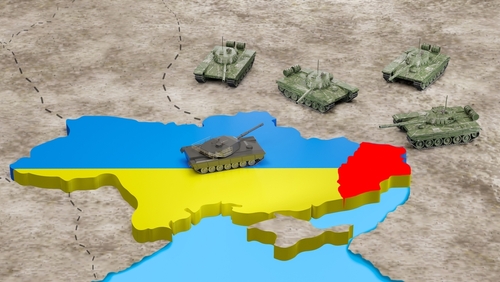
EEMEA | Equities | Politics & Geopolitics

EEMEA | Equities | Politics & Geopolitics
This article is only available to Macro Hive subscribers. Sign-up to receive world-class macro analysis with a daily curated newsletter, podcast, original content from award-winning researchers, cross market strategy, equity insights, trade ideas, crypto flow frameworks, academic paper summaries, explanation and analysis of market-moving events, community investor chat room, and more.
Markets are good at some things. They are good at projecting and discounting future earnings. They are not perfect, as various bubble markets over time have demonstrated, but mostly good. They are good at reading the economic tea leaves and pricing bonds and rates accordingly. Case in point – for years after the financial crisis, rates markets refused (correctly) to ratify the Fed’s dot plots that kept calling for higher rates in the not-so-distant future. And again, not perfect – markets have arguably been behind the curve in anticipating the Fed’s hawkish stance against inflation.
But markets are also very bad at some things – in particular anticipating and discounting politics and geopolitics. To cherry-pick a couple examples, when the US went to the brink of default in the summer of 2011 when Republicans refused to raise the debt ceiling, the S&P 500 (SPX) dropped 17%. In an unusual burst of volatility, the overnight Libor and the Fed Funds effective rate jumped nearly 10bp. Earlier this year when Russia was moving troops to the Ukrainian border, markets treated the prospect of invasion as inconceivable. When it started, equities sold off 8.4%.
There was also the massive selloff when Covid shutdowns hit in early 2020 – the SPX fell by a third and the 10-year Treasury yield dropped 100bp. The difference here is markets had little advance notice of the potential risks; in 2011 and early 2022, markets simply assigned a zero probability to the emerging risks.
We find ourselves at another improbable precipice – the prospect of a major escalation in the Ukrainian war that could lead to NATO stepping in and even the use of nuclear weapons. Anyone who follows the news is well aware of this. Yet, in our view, markets have not taken any noticeable step to start pricing in this potential scenario.
We acknowledge the risk of major escalation is still small – but that is a shift from essentially negligible before the explosion that disabled the Kerch Strait Bridge. In a companion article we put this probability at 5% for now. Whether it goes higher or fades may depend on the outcome of mid-term elections in the US on November 8. Should Republicans gain control of the House they want to reduce aid to Ukraine, which could lead to negotiations to end the conflict. But should Democrats retain control of Congress, aid could increase, along with the risk of further escalation.
In this note, we review the risks facing major financial markets should the escalation scenario develop further. And we outline steps investors should be thinking about now to mitigate this exposure.
Over time, equities rise roughly in line with earnings growth; but markets clearly disconnected from reality in 2021 (Chart 1). The 2022 price action in US equities has been driven largely by a correction of that bubble market and the prospect of rising rates, which raises the discount rate on future earnings and raises the risk of an economic slowdown and slower earnings growth.
In our view, the SPX is now trading near fair value based on projected earnings. There is little evidence that investors have started to price in rising geopolitical risks, which could cause the SPX to trade well below the level implied by earnings.
Another telling indicator is the 2022 performance of the Euro Stoxx 600 equity index (SXXP) (Chart 2). It has moved roughly in parallel with the SPX throughout 2022.
Yet Europe has been under considerable stress this year. Think the Russian invasion, a refugee crisis, a massive energy price spike, unprecedented droughts (at least in modern times), sabotage of critical infrastructure and a near meltdown of pound sterling. So you might have expected to see several downward spikes (even if shortlived) in the SXXP. But there is no evidence of that.
Equity volatility markets tell a similar story. Both the VIX (for the US) and VSTOXX (for Europe) spiked sharply in February – but only when the invasion started on 24 February (Chart 3).[1] Before then, both indices were trading within recent ranges.
Both VIX and VSTOXX indices are currently still trading within their recent ranges. Both indices rose about 2 percentage points after the Kerch Strait Bridge explosion on 8 October but quickly recovered.
There is no indication that investors are starting to actively hedge against the risk of a significant escalation in the Ukraine war.
The last thing we want to see or create is an inflated sense of risk about a NATO invasion or a nuclear confrontation in Ukraine.
But investors should not ignore the clear signs that the risk has morphed from negligible to small but real. Investors should be planning what to do either now or should things escalate.
We state unequivocally that equities will sell off sharply, maybe massively, should the severe escalation scenario happen. A selloff similar to March 2020 is possible. How quickly markets rebound will depend on the facts and circumstances at the time.
We suggest investors take the following steps:
[1] The Bloomberg tickers are VIX Index and V2X Index.
Spring sale - Prime Membership only £3 for 3 months! Get trade ideas and macro insights now
Your subscription has been successfully canceled.
Discount Applied - Your subscription has now updated with Coupon and from next payment Discount will be applied.